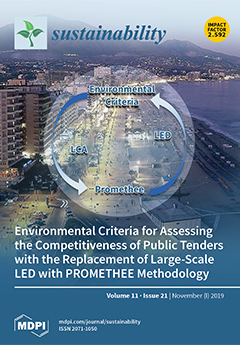In this study, we applied the Denitrification and Decomposition model to predict the greenhouse gas (GHGs; CO
2 and N
2O) emissions and cabbage yields from 8072 cabbage fields in Korea in the 2020s and 2090s. Model outputs were evaluated as a
[...] Read more.
In this study, we applied the Denitrification and Decomposition model to predict the greenhouse gas (GHGs; CO
2 and N
2O) emissions and cabbage yields from 8072 cabbage fields in Korea in the 2020s and 2090s. Model outputs were evaluated as a function of tillage depth (T1, T2, and T3 for 10, 20, and 30 cm) and fertilizer level (F1, F2, and F3 for 100, 200, and 400 kg N ha
−1) under the Representative Concentration Pathways 8.5 climate change scenario. For both time periods, CO
2 emissions increased with tillage depth, and N
2O emissions were predominantly influenced by the level of applied N-fertilizers. Both cabbage yields and GHGs fluxes were highest when the T3F3 farming practice was applied. Under current conventional farming practices (T1F3), cabbage yield was projected at 64.5 t ha
−1 in the 2020s, which was close in magnitude to the predicted cabbage demand. In the 2090s, the predicted cabbage supply by the same practice far exceeded the projected demand at 28.9 t ha
−1. Cabbage supply and demand were balanced and GHGs emissions reduced by 19.6% in the 2090s when 94% of the total cabbage farms adopted low carbon-farming practices (e.g., reducing fertilizer level). Our results demonstrate the large potential for Korean cabbage farms to significantly contribute towards the mitigation of GHGs emissions through the adoption of low-carbon farming practices. However, in order to incentivize the shift towards sustainable farming, we advise that lower yield and potential economic losses in farmlands from adopting low-carbon practices should be appropriately compensated by institutional policy.
Full article





